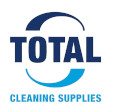
|
Total Cleaning Supplies |
|---|
What is the pH Scale & How Can It Help the Cleaning Process?
The pH scale shows how acidic or alkaline a chemical is. pH of 7 is neutral, anything below 7 is acidic, and above 7 is alkaline.
For each whole number you move away from pH 7, the acidity or alkalinity increases by a factor of 10. That means that a chemical with a pH of 5 is ten times more acidic than pH 6, while pH 1 is 100,000 times more acidic than pH 6.
Examples of common acids would be vinegar, lemon juice or hydrochloric acid, while common alkalines are chemicals like bleach, degreasers and common spray & wipe solutions.
A general rule is that acidic soil build-up requires an alkaline chemical for best results. And yes, you guessed it, alkaline soil build-up will require an acidic chemical. This is why understanding pH is such an important part of cleaning, and these basic principles can save a huge amount of time and hard work.
Popular applications for Acid-Based Cleaning Solutions
Acid-based cleaners are great for tackling inorganic and mineral-based stains. Think of calcium deposits, hard water stains, dried urine, and limescale build-ups – all the types of soiling you find in bathrooms, shower areas, or outdoors around a swimming pool.
Acid cleaners are the best way to remove these mineral-based stains, which cuts through and liquifies the build-up where it can be washed away. If you’re cleaning tiles and grout in a bathroom, use an acidic product like a phosphoric acid-based tile cleaner.
When to Use Alkaline-based Cleaning Solutions
Alkaline chemicals are incredibly effective at tackling organic and oily stains. Think of the oily stains and general dirt build-up you’ll find in areas like kitchens, lunchrooms, classrooms, industrial and retail environments. Most organic stains tend to be acidic in nature, making an alkaline cleaner the best choice for fast, effective cleaning.
How to Avoid Damaging Surfaces with Strong Chemicals
To avoid damaging surfaces when you’re cleaning simply follow the dilution ratios recommended on the label, don’t leave strong chemicals on a surface for too long, and don’t let them dry out before you rinse them off. Also ensure you follow any specific cleaning guides from the flooring manufacturer, and always pre-test on a small area to be safe.